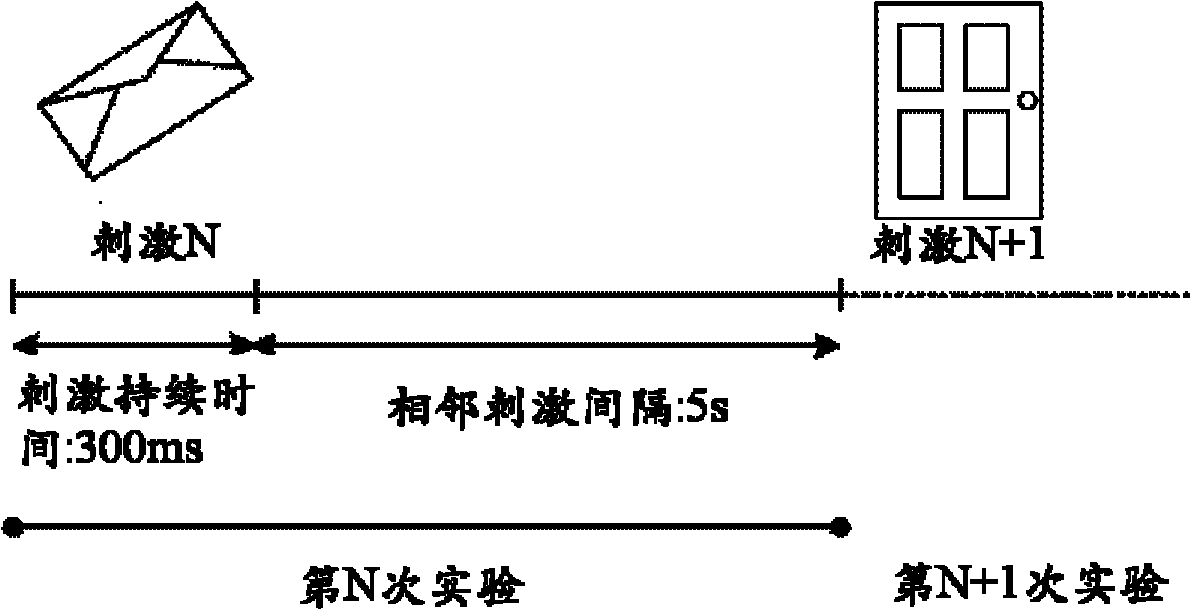Identity identification method based on visual evoked potential (VEP)
A visual induction and identification technology, applied in human identification, medical science, sensors, etc., can solve the problems of difficulty in copying and forgery, loss of identification function, etc., and achieve the effect of difficulty in copying, high measurement accuracy, and high recognition accuracy.
- Summary
- Abstract
- Description
- Claims
- Application Information
AI Technical Summary
Problems solved by technology
Method used
Image
Examples
Embodiment Construction
[0034] Different from the resting EEG, the present invention is based on visually evoked EEG (VEP). Visual Evoked Potential (VEP) is an evoked EEG signal generated when a subject receives a special visual stimulus (such as observing a picture). Studies have shown that VEP in the gamma band (30-50Hz) is closely related to higher-level brain functional activities, such as memory and cognition. Since memory and cognitive levels usually reflect individual differences, VEP signals in this band can be used for identification.
[0035] The present invention proposes a method for identity recognition using visually evoked EEG (VEP) in the gamma band, and the key technologies involved include: collection of EEG signals, signal processing, feature extraction, classification and identification, and the like. The technical process is: apply some kind of image stimulus to the subject, select the appropriate scalp lead electrodes to collect the visually evoked EEG of the subject, perform p...
PUM
 Login to View More
Login to View More Abstract
Description
Claims
Application Information
 Login to View More
Login to View More - R&D
- Intellectual Property
- Life Sciences
- Materials
- Tech Scout
- Unparalleled Data Quality
- Higher Quality Content
- 60% Fewer Hallucinations
Browse by: Latest US Patents, China's latest patents, Technical Efficacy Thesaurus, Application Domain, Technology Topic, Popular Technical Reports.
© 2025 PatSnap. All rights reserved.Legal|Privacy policy|Modern Slavery Act Transparency Statement|Sitemap|About US| Contact US: help@patsnap.com



